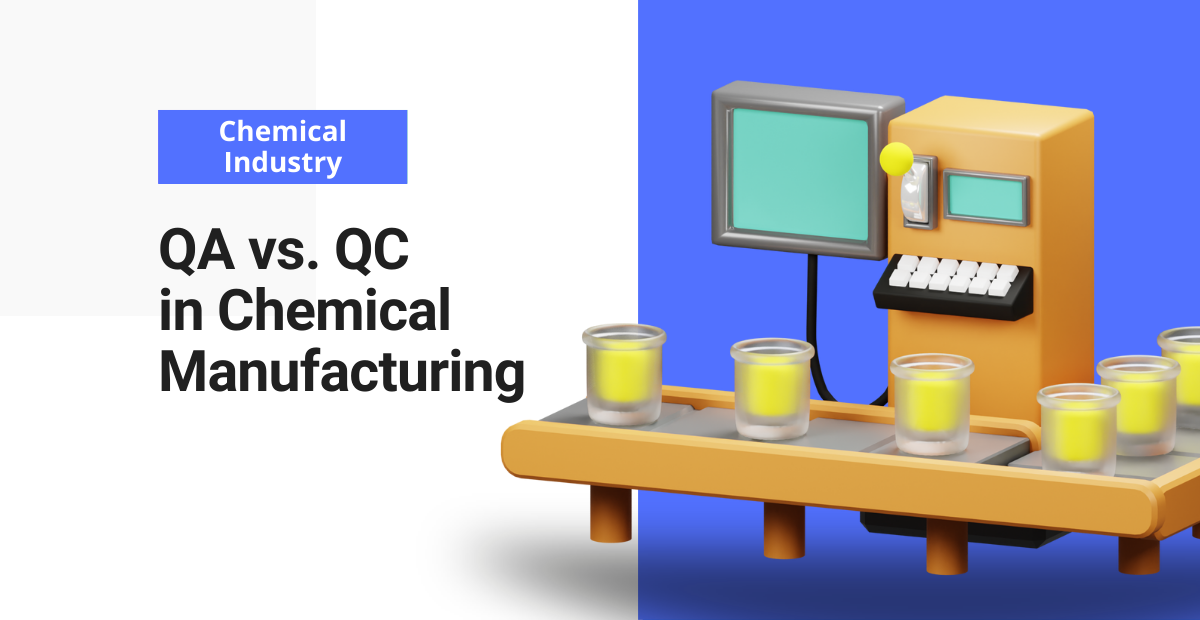Quality assurance (QA) and quality control (QC) both play a crucial role in chemical manufacturing. They help ensure that manufactured products meet the regulatory requirements.
In this post, I’ll outline the difference between quality assurance vs. quality control in chemical manufacturing and explain the benefits of each method.
Quality assurance overview
Quality assurance involves establishing a system for maintaining and enforcing manufacturing quality standards. QA happens throughout the production process to make sure that each step contributes to the quality of the finished product.
For instance, in the production of pharmaceuticals, QA requires manufacturers to follow strict guidelines in every stage of production. And manufacturers must have standard operating procedures (SOPs) for each stage of production. From raw material sourcing to final packaging, SOPs enforce consistency in the production process.
Free template!
Download this free template to develop standard operating procedures for your facility.
Benefits of QA
Here are the top three benefits of quality assurance for chemical products:
- Reduction of product defects: Minimize product defects by ensuring that all stages of production follow the required standards.
- Improved efficiency: Streamline the production process, reducing the risk of costly rework.
- Improved product safety: Ensure that workers follow safety standards to reduce the risk of accidents and product recalls.
Quality control overview
Quality control in chemical manufacturing involves testing to find any defective or non-compliant products. The goal of quality control is to ensure that defective products do not make it to the customer.
For example, when producing paints, QC involves testing the final product for properties like viscosity, gloss, and color consistency. If any of the properties fall outside the required range, the product is rejected or reworked.
Benefits of QC
These are the top three benefits of quality control in chemical manufacturing:
- Identification of product defects: Identify any defects in the final product to prevent customers from receiving substandard goods.
- Improved customer satisfaction: Ensure that the final product meets the customer’s quality standards.
- Improved brand perception: Eliminate product defects to establish positive brand perception.
The difference between QA and QC in chemical manufacturing
While QA focuses on preventing defects, QC focuses on identifying defects. In other words, QA is a proactive approach towards ensuring product quality and QC is a reactive approach.
Take the production of fertilizers as an example. In this scenario, QA ensures the quality and sourcing of the raw materials while QC ensures the quality of the final product. QA
Any successful EHS program uses both quality assurance and control to maintain their product standards. If you want to take your own program to the next level, you need quality measures at both ends of the process.
Examples of chemical quality enforcement measures
Below are some examples of tasks you’d do for quality assurance vs. quality control in chemical manufacturing processes.
Quality assurance
- Implement a raw material testing procedure.
- Verify the source of raw materials.
- Create SOPs for quality testing procedures.
- Test workers how to verify the validity of chemical production materials.
Quality control
- Test finished goods for potency levels, impurities, gloss, viscosity, and stability.
- Reject or rework products that fall outside of testing limits.
- Deep dive quality failures for the source.
This list by no means includes all the tasks for QA and QC. But it should provide you with enough context to get started on implementing these control measures in your chemical production processes.




